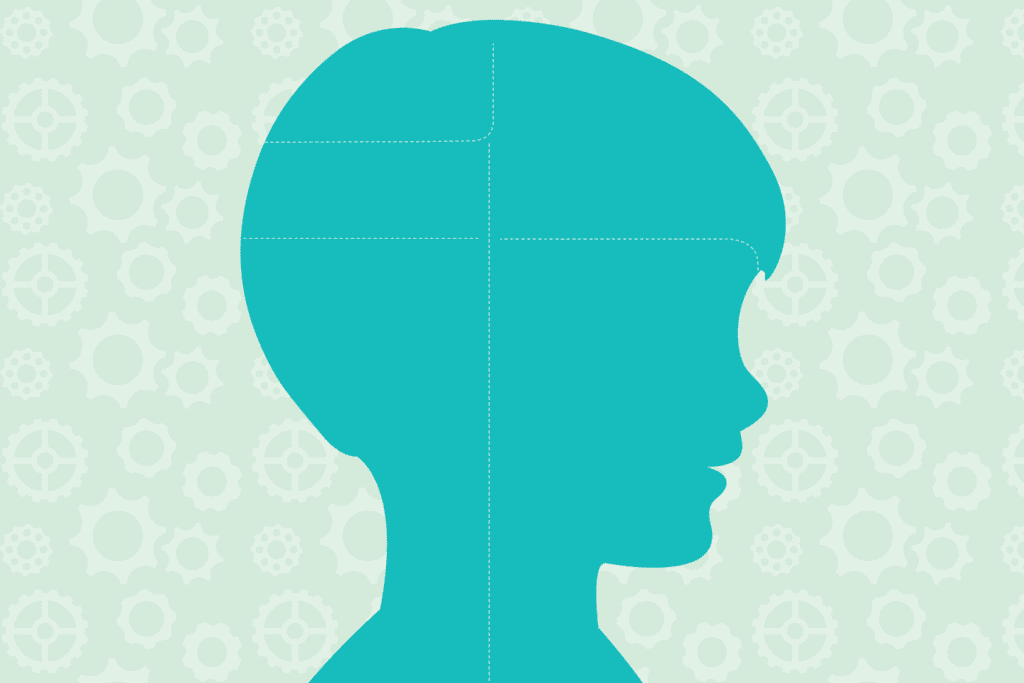Some Kids Struggle with Working Memory
Think about the series of commands you might give your child on a school night: “It’s time for bed! Put away your toys, change into your PJs, and brush your teeth!”
Maybe your child put away his toys and got into his PJs, but forgot to brush his teeth. If your child frequently loses track of tasks like these, it’s possible he may struggle with working memory.
“High distractibility or difficulty following multistep directions are signs there might be a problem, especially when combined with academic struggles,” says Dr. Vanessa Snyder, professor at Richmont Graduate University.
What is working memory?
Working memory is one of the brain’s “executive functions,” which are mental skills we use to prioritize and accomplish tasks. Defined simply, it’s the ability to keep in mind the information we need to complete a plan, project, or problem. For example, if you need to make a phone call and someone tells you the numbers out loud, your working memory will temporarily store those numbers until you actually dial them.
“Unlike long-term memory, which stores information for later use, working memory must be processed and used immediately – even while new information is being provided,” explains Dr. Lindy Blazek, learning specialist and Dean of Academic Affairs at Skyuka Hall, an independent school serving Chattanooga’s students with learning differences.
Psychologists often describe working memory as a “mental workspace” where we store relevant information during activities. Imagine a desk. There is only so much space on a desk to place everything you need to finish a task. Similarly, working memory has finite capacity for storing information, and some people’s “desks” are smaller than others’.
Every single day, we use working memory to go about our lives. From remembering our shopping list to tidying the house, working memory helps us do what we set out to do, in the order that we set out to do it. “Working memory allows us to follow along in a conversation or lecture, comprehend written passages, and complete complex tasks,” says Dr. Snyder.
One of the easiest ways to spot a struggle with working memory is when someone has a hard time following directions. “For example, if you ask a child to clear his plate from the table, scrape off the table scraps, and put his plate into the dishwasher, he may never get past clearing the plate,” says Blazek. “He will be so focused on that task that he cannot mentally go back and recall what comes next.”
How can it affect success in the classroom?
In the classroom, struggles with working memory may manifest as trouble following directions, comprehending reading material, writing in an analytical way, or solving complex math problems. Any task that requires a child to hold data in his mind, while manipulating it for answers, can present a challenge.
Remember those tricky word problems in math class? For example: If Joan has 10 apples and gives four to Tommy and two to Andrew, how many will she have after she has eaten one?


Students with poor working memory will struggle to “grab” or “hold on to” all of the incoming information. While they are working to keep the numbers in their head, others may already be figuring out the correct operation and writing the answer down.
“Solving math problems in your head requires you to remember a set of numbers while also manipulating those numbers to produce a solution. That’s why they pose such a problem for those with deficits in working memory,” says Dr. Snyder.
How can it affect a child over time?
The rate at which material is taught in a traditional classroom, and the expected rate of retention, is geared towards students with average processing speed and no attention or memory issues. So for children with limited working memory, traditional learning methods can feel particularly time-consuming and mentally draining. Over time, this may increase the student’s stress and frustration, as well as cause their self-esteem to decline.
Unfortunately, parents and teachers often interpret lapses in working memory as poor behavior. Meanwhile, the child who fails the task may grow frustrated and embarrassed. Criticized for his “insubordinate” or “lazy” behavior, he may begin to disengage from the learning process altogether.
In other cases, adults might see children with poor working memory as “slow learners,” when, in fact, intelligence is not the issue. “In typical lecture-style methodology, children with poor working memory never get past the first step of processing initial information, and rarely get to the problem-solving or written stage of the problem,” says Dr. Blazek. “Teachers will often see these children as ‘slow learners,’ when they actually tend to average normal to high IQs and are simply stuck trying to ‘get up to speed’ with how the information is being administered.”
“Solving math problems in your head requires you to remember a set of numbers while also manipulating those numbers to produce a solution. That’s why they pose such a problem for those with deficits in working memory,” says Dr. Snyder.
Did You Know?
There are basically two types of working memory: auditory and visual-spatial. Auditory memory records what you hear, while visual-spatial memory recalls what you see.
In reading, auditory working memory helps you attach sounds to the letters, while visual working memory helps you remember how letters look so you can put them into words.
In math, auditory working memory helps you attach a sound to a symbol, while visual working memory helps you recognize and reproduce numbers.
What is the relationship between working memory and attention?
Like working memory, attention is another important executive function of the brain. To continue the desk analogy, attention is the funnel that carries information to the cognitive workspace where working memory makes sense of it. Once the brain processes the information, it either discards it or sends it to long-term memory.
Children with Attention Deficit Hyperactivity Disorder, or ADHD, often struggle with working memory, because new information must compete with distractions. Where another child might have no trouble focusing on a lesson, a child with ADHD must work hard to block out competing stimuli. They may struggle to recall or process information because it never funneled to their working memory in the first place.
How can I support a child who struggles with working memory?
Kids with limited working memory are not unintelligent and can learn as much as others in the classroom. Without intervention though, they may repeatedly experience cognitive overload. The good news is there are some immediate steps you can take if you think your child may have issues with working memory.
Seek an evaluation.
If your child is struggling in school, a professional can clarify where her difficulties lie. This will allow you and your child’s school to provide strategies and support she needs. If your child has ADHD, a professional may also prescribe medication that can help.
Establish routines.
Making a pattern out of tasks helps kids free up space in their working memory. Routines help clean off that cognitive workspace. “A daily routine that doesn’t change also helps, especially when that schedule is posted somewhere they can see it,” says Dr. Blazek.
Break things down.
Break large tasks into smaller steps with simple directions. Students who struggle with working memory may excel when material is split into manageable segments. For example, if your child needs to complete a series of tasks, create a checklist to help him mark off items one by one.
Build in repetition.
When giving step-by-step directions, ask the child to repeat directions back to you. Deficits in working memory require significantly more repetitions before learning occurs. “Directions should be given orally, with checks to see that the student understands what is expected,” says Dr. Blazek.
Take breaks.
Most children who have these struggles need mental breaks, so taking away things like recess to have them complete assignments can actually be counterproductive. Instead, help kids plan their breaks with a system. “One example is to focus on a task for 20 minutes (or whatever the child can handle), followed by a five-minute break, followed by 20 more minutes of focus,” says Dr. Snyder. “This helps kids focus, because they know a break is coming.”



Want to learn more?
If you think your child could struggle with working memory, don’t wait to reach out for support. Contact a child psychologist, psychiatrist, or social worker today. For more information on working memory, a great place to start is the Child Mind Institute at childmind.org. The Child Mind Institute is an independent, national nonprofit dedicated to transforming the lives of children struggling with mental health and learning disorders. The organization’s website offers resources for educating yourself on working memory, as well as equipping your child with healthy, effective coping strategies he can use to succeed now and for the rest of his life.



Dr. Lindy Blazek
Learning Specialist and Dean of Academic Affairs, Skyuka Hall



Dr. Vanessa Snyder
Interim President, Dean of Clinical Affairs, Director of Institute of Traumatology, Assistant Professor, Richmont Graduate University

